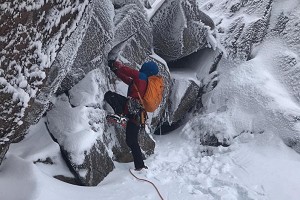
A modular crampon with changeable front points, the Beast has been around for years. In fact, we reviewed the Beast Lite, an alu version, back in 2014. Sometimes it's nice to look at a well-established product rather than the latest thing.
Comparable in ability and price with models such as the BD Cyborg, Petzl LYNX and Grivel G14, the Beast can be set up in twin or monopoint mode. But in this case you also get the versatility of three different toe bail configurations for the price of just one pair of crampons. In terms of permutations, the number of the Beast is six.
Though billed as a technical model designed for steep ice and mixed climbing, which it is, I've also found it a good all-rounder for general winter mountaineering. The Beast would be light enough for Alpine days, but it's also built tough to cope with mixed abuse and the rocky rigours of the UK's typical patchy cover. And with a traditional 12-point arrangement (plus a couple of bonus shorter points) there's plenty of bite underfoot when traversing snow slopes.
Weight
At 990g for the pair (Edelrid say 962g), including all the front points, the anti balling plates and the wire toe bail with retaining straps, the Beast compares favourably with similar modular crampons. It's significantly lighter than the Grivel G14 (nearly 1100g), and less than the Petzl LYNX (1020g). Arguably the G14 is more solidly built (ie. it's a tank) but that's not to call the Beast in any way flimsy - far from it, in my experience to date. It's also worth pointing out that the LYNX has an extra set of points, though I'm not sure I'd spot a performance advantage in use.
In a winter pack every little weight saving helps, provided you're not compromising functionality or durability. Neither of these have been an issue for me as yet, so the Beast's comparative lightness is all good in my book.
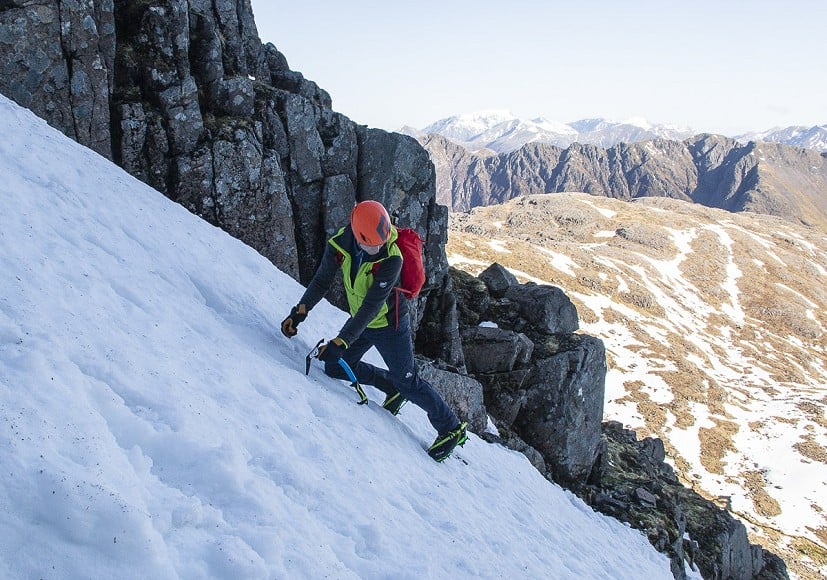
In transit the Beast is pretty compact, collapsing to about 26cm in length. That's not much longer than the Petzl SARKEN, one of the more packable crampons I've used. They fit easily into a small-ish rucksack, and my only regret on this score is that Edelrid don't provide a crampon bag as standard (although that's probably fair enough considering everything you do get here).
Maximum modularity
Its customizability is one of the best things about the Beast.
Four front points are included as standard. These are attached, very securely, with a single small screw, so you can quickly and easily change between a twin point or monopoint configuration. It's great to have both options, and though I've mainly remained in twin mode - I prefer the stability on rock, and the increased holding power in crud - there are obviously routes or conditions, even in the lower grades that I frequent, for which a monopoint setup would be preferable. It clearly comes into its own as you move up the grades. Having climbed tech 5 with the Beast, on both ice and mixed, I can safely say it's not what's on my feet that's holding me back. These crampons would comfortably perform well into the higher grades.
The vertically-aligned front points are made of hardened steel for longevity and penetration in ice, and have a good aggressive shape with lots of small sharp teeth, plus a small horizontal top side for purchase in softer stuff. I've sharpened them once so far, and would ideally have a set of points for mixed and a sharper set reserved for ice.
Replacement points can be purchased at £30... each! This seems extortionate, especially if you tend to climb in dual point configuration. You can buy four front points from rival brands for around £30-£45, so if there's one thing that would make me think twice about this crampon, then this is it.
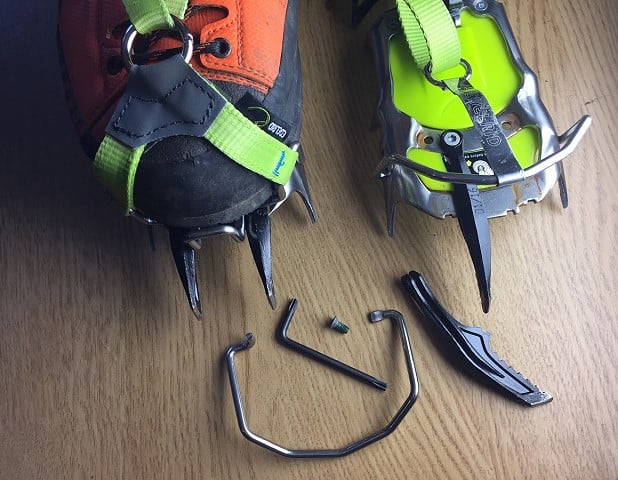
With a heel clip, the Beast can of course only be paired with a B2 or B3 boot. However, Edelrid provide three different toe bails with the one crampon, giving you a lot of options for that £180 initial outlay:
- To use them with a B2 boot with no toe welt, simply switch to the wire-and-webbing toe cradle. I've found this gives a good tight fit on most winter boots, though the shape of the wire bail is perhaps a little narrow for broader-toed models, since the very tip of the boot doesn't tend to rest on the front of the wire (not that it seems to matter for security since it's the strap that provides the holding power).
- If you're going fully 'automatic' with a B3 boot, use the simple wire toe bail and run the webbing retainer strap around the top of your boots.
- For an 'automatic' precision fit with the added security of a full strap, fit the toe bail with the metal retainer. I have not always got on with plain wire at the toe, which is very dependent for security on a precise match between the boot and the bail, something that varies between models and can get worse over time as your boot soles wear. So for me the belt-and-braces bail-plus-strap fitting is the best.
Fitting
My size 12 feet tend to be towards the outer limits of crampon length adjustment, at least with a standard length linking bar, but the Beast has a bit of length to spare, and I think they'd go to at least a size 14. To fine tune the fit, the toe bail and heel clip can each be moved between two sets of holes. With some crampons this can be a real struggle, but with the Beast it can easily be done by hand. And of course there's also an adjustment wheel on the heel clip.
Using the toe bail, the Beast is pretty much a perfect fit on my broad-toed, generally pretty chunky Salewa Vultur Vertical boots, tight and secure and with plenty of front point protruding. But they also manage to give a close and secure fit on the much slimmer, pointier La Sportiva Trango Ice Cube. If they can work with these two quite different boots in my gear stash then that suggests they should suit a lot of users. But needless to say, you should try them in the shop with the boots you intend to fit them to.
Point configuration
The front points are long and aggressive, and reminiscent of the G14's in shape and general feel. While angled steeply forward, and with a barb for extra purchase, the secondary points seem relatively short and do not extend as far forward as you'll find on some crampons - something Toby also noticed when reviewing the Beast Lite. On my old pair of Petzl SARKENs, for instance, the secondary points visibly extend further forward. It may be a matter of only a few millimetres, but if you're teetering about on front points on ice it can be reassuring when the secondary points engage, offering that bit more stability. Are the Beast's shorter secondary points a problem? I don't think so, and whether you even notice probably depends on what you're used to. I'll have to report back as and when I've climbed more steep ice in mono mode. Using the Beast in twin point setup should help mitigate this in any case.
The rest of the points are also on the shorter side. Again, comparing them to my old SARKENs, there's a few millimetres less point. I've worn the Beast on all the usual sorts of winter terrain, from hard ice to soft snow, rock to neve, and they definitely have enough bite for security underfoot. The advantage of shorter points is that when you're teetering around on rocky ridges or scree they feel less snaggy and skittery, and you're arguably less prone to turning an ankle. I think this makes the Beast a bit better than some technical models for wind-scoured rocky walk-offs, hillwalking days and general mountaineering.
The points underfoot have an angled 3D shape. The pros of this 'cookie cutter' design are that it gives both forward and sideways traction, and must also help make the points stronger for their weight. However I've found there is a drawback in terms of the crampons' propensity to ball up in some sticky snow conditions. Though the plastic anti-bot plates generally do their job, I do think the Beast seems more prone to balling than some models. Not a problem most of the time, but one to be aware of.
Other features
Knot them? Tuck them in? Even when I've cut them short, I'm never sure what to do with the spare tails of my crampon straps, which usually end up needing to be re-secured at some point in the day. Edelrid have solved the problem with the addition of a couple of robust plastic clips on each side. These neatly hold the excess strap, offering a much better solution than trying to tuck the tail under itself. I don't suppose this is a unique feature, but it's one little touch that makes a big difference.
Here's an annoyance: With wet, cold hands, extricating yourself from these crampons can be hard work. With no lip on the top of the heel clip, there's nothing to get purchase on when you're levering it off. Also the strap buckles feel quite small and very tight when trying to release them - you don't get any kind of pull tab to make this easier (unlike dome designs of technical crampon). On the positive side, I guess there's very little chance of accidentally undoing the buckle while climbing.
Summary
Tough, capable and relatively light, the Beast is well worth a look if you're in the market for some all-round technical crampons for ice and mixed climbing, alpine days or Scottish winter. It's broadly comparable to popular models from brands with more of a presence in the UK crampon market, but the Beast is arguably more than averagely versatile, offering not only twin and monopoint, but also three different front bindings for the price of just one pair of crampons. They've been my crampon of choice this season, and probably will be again next year. If only those replacement front points weren't so expensive...
Edelrid say:
High-end crampons made of high-grade steel for steep ice and mixed climbing.



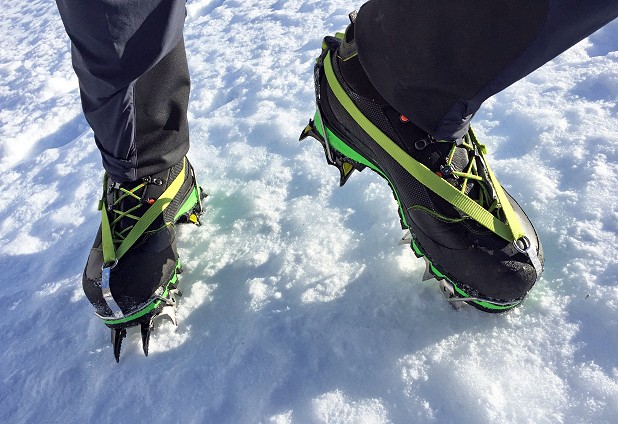
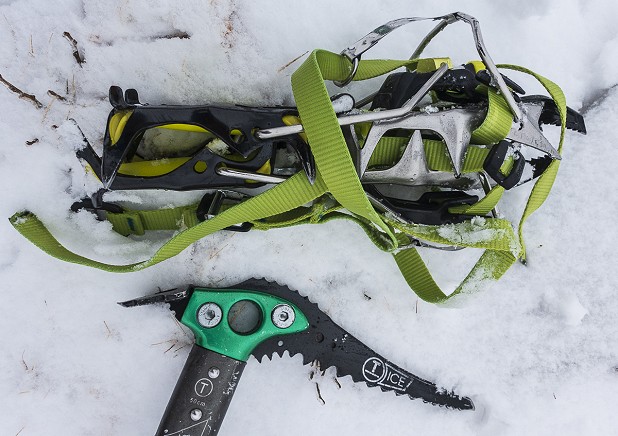
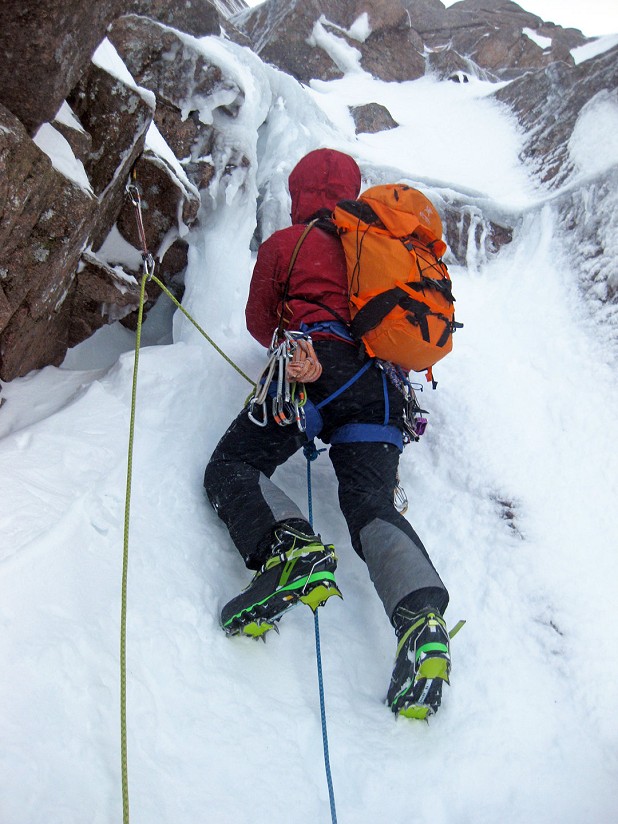
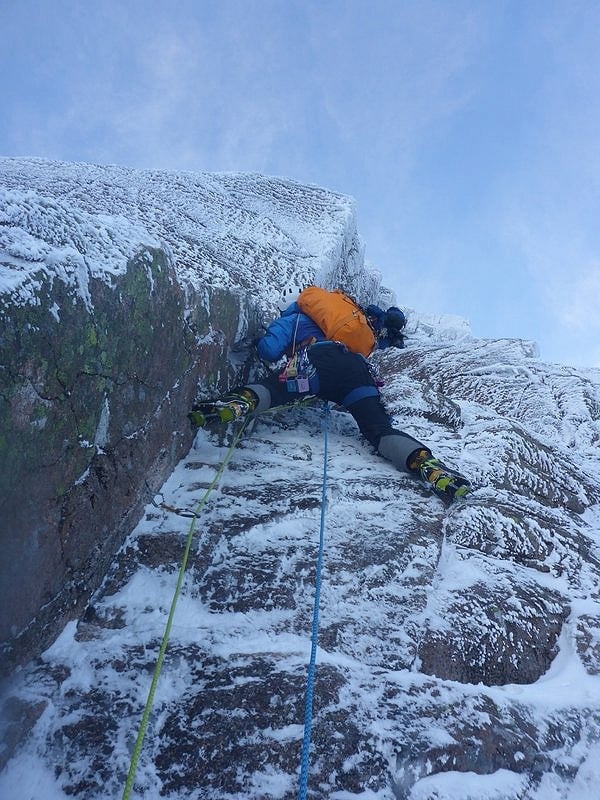
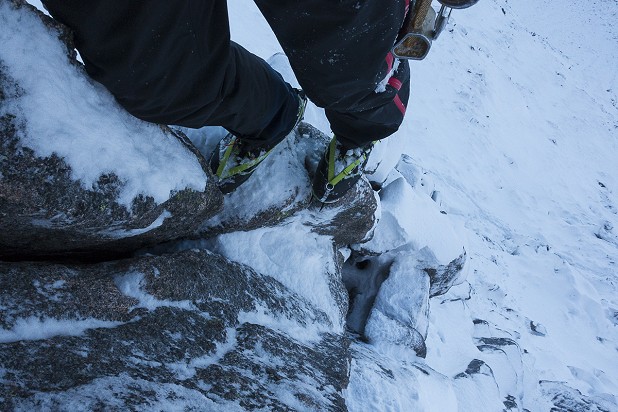
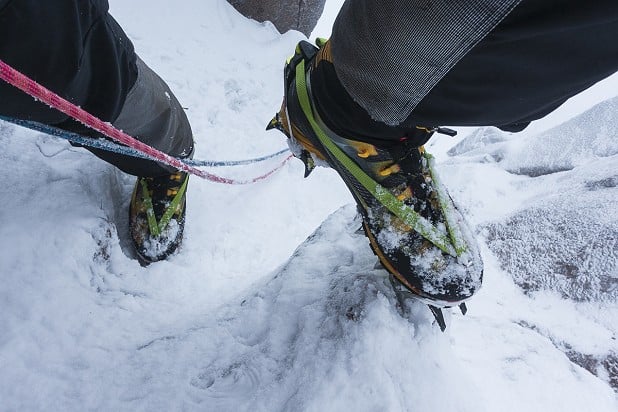
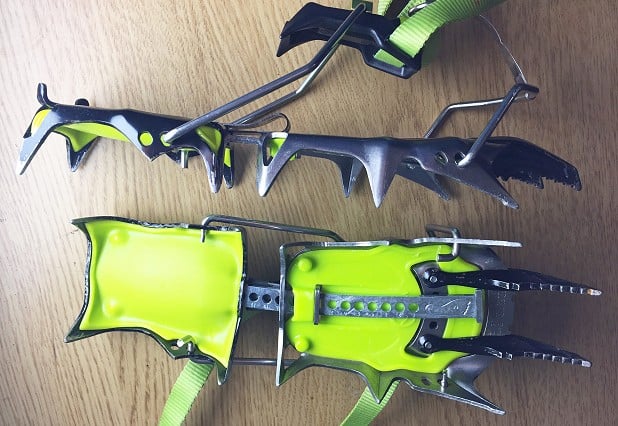
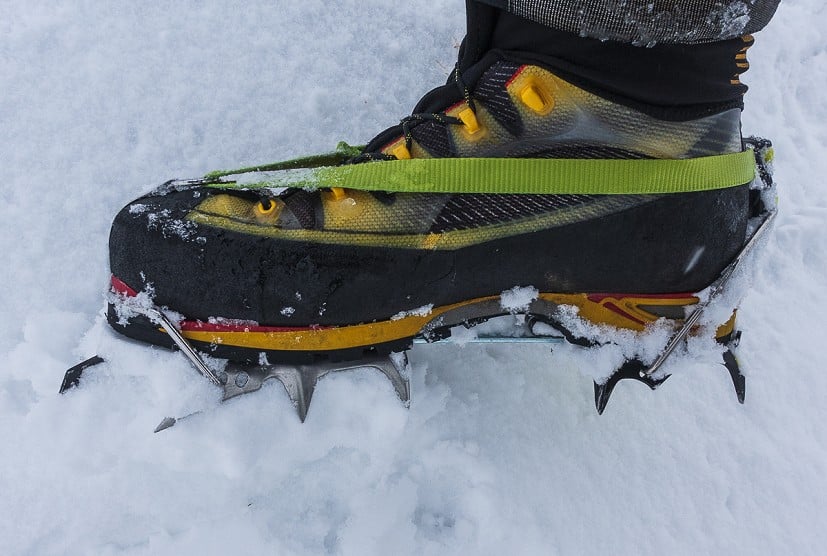
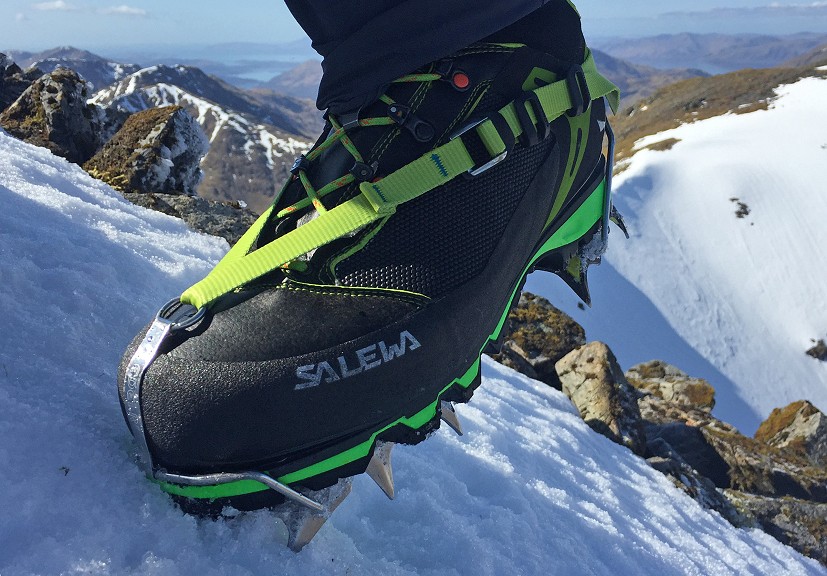
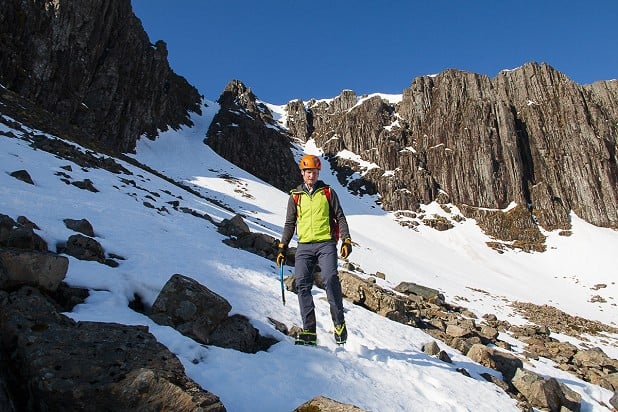
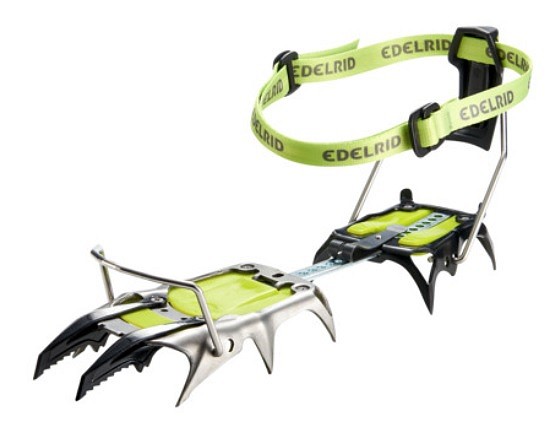
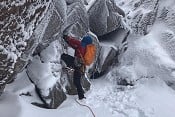
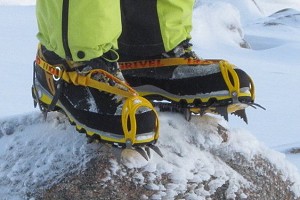
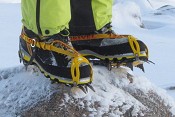
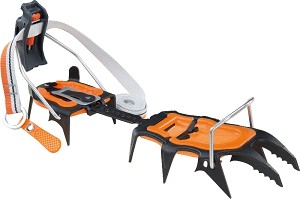
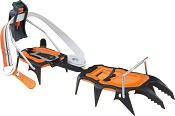
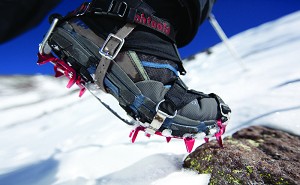
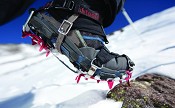

Comments
Nice review Dan. Re replacement points, looks like they have a screw thread machined into them which might add a little expense compared to other brands which have slots/holes and separate (generic part) bolts?
Seconding vscott - a good review Dan!
Gosh - writing the review of the Lite version feels a long time ago - you can tell from video attached I was going through my under-employed year! :)
I remember comparing the alu ones at the time with pictures of the steel version and it does look like the steel ones have better secondary points, so even if they are less than the secondary points from other brands, at least they must give more support than the points on the Lite model.
I moved back to the UK just a few months after the Beast Lite review was published so I've mainly used mine as a ski touring crampon as they are so much lighter than my other crampons. But I've decided particularly winter climbing in England and Wales, that shorter downward points on crampons are often an advantage, for exactly the reason you say in your review: they make crossing exposed rock and particularly scree easier than when you have longer points. At the same time slightly shorter downward points don't seem to be any disadvantage when on deeper snow or neve. So for example, I have G12s and CT Nuptse crampons and for general mountaineering in the UK I've found I prefer the CT ones because the points are slightly shorter and you feel you 'teeter' in them less walking on rock, scree etc. The Beasts look good for UK use from that perspective.
Thanks!
Yes, you're right: there's a thread in the front point. I hadn't thought of that. Still, I suppose the affordability is an issue regardless!
Quite right Toby, I do think slightly shorter underfoot points are generally preferable. I've yet to notice a disadvantage